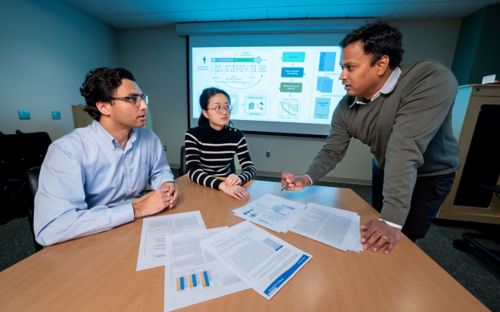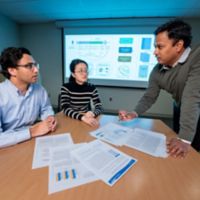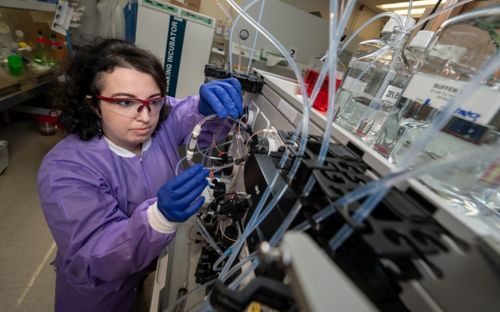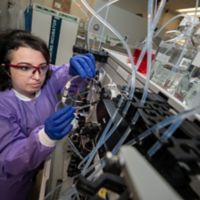When work takes a toll: St. Jude research adds to our understanding of physician burnout.
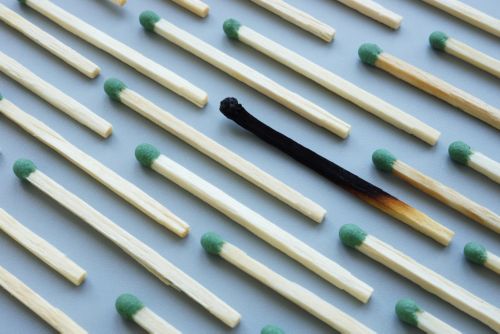
Photo 204452503 © Designer491 | Dreamstime.com
Work-related burnout among physicians is a challenge. It’s difficult to measure and compare across settings, and it’s difficult to identify root causes and make meaningful changes to prevent and reduce symptoms.
We’ve all observed a burned-out colleague or personally wrestled with the consequences of this condition. Since the 1970s, researchers have investigated burnout as a workplace concept, but it has recently gained attention from top-tier medical journals.
JAMA published a series of primary research studies, systematic reviews and editorials in 2018, and the journal continues to dedicate space to the topic. It’s becoming more widely recognized that physician burnout has negative impacts beyond the individual, including patient care and patient and family experience. Moreover, individual-based interventions for burnout deliver limited benefits when substantial systems-based sources of burnout remain unaddressed.
Measuring burnout
In a largely observational study, we determined the extent of physician burnout and identified broad categories of perceived levels of work demands among attending physicians at St. Jude Children’s Research Hospital. Then we dug deeper into these initial results through individual interviews and qualitative analyses.
What could we learn that might help us develop effective burnout interventions for St. Jude physicians? And what knowledge might generalize to physicians and health care staff in other settings?
Burnout researchers often use self-report surveys. Many burnout surveys exist; we deployed the most widely used measure, which divides results into three categories: emotional exhaustion, reduced personal accomplishment and depersonalization.
About a quarter of participants scored high on at least one of these categories. Emotional exhaustion was elevated more frequently than the other two, as one might expect from physicians who treat children with catastrophic diseases. Time constraints predicted burnout levels more than any other job demand.
Surveys get you only so far
Twenty-six attending physicians each volunteered an hour to speak candidly about the causes and consequences of work-related stress. They said that handling multiple roles creates competing priorities, which can generate unhealthy levels of job stress.
St. Jude attending physicians are not only researchers and clinicians but also teachers and administrators. Patient care comes first, but academic productivity factors heavily in promotion and job security. Administrative responsibilities can include managing a department or clinic and serving as a committee or work group physician leader.
In our journal article, we said, “The pressure to publish can conflict with other professional priorities, such as teaching or going ‘above and beyond’ for patients, and administrative responsibilities can demand an inordinate amount of time without sufficient support.”
All of this can add up to insufficient hours in the day, where work bleeds over into home life. Physicians, harried by job demands, may neglect family and friendships. Occasionally, this is a manageable nuisance; chronically, it can adversely affect the individual’s health and well-being, and patient care.
What shall we do?
Workplace burnout is a multi-layered challenge. Within our study, we identified the following stressors:
- Difficulty balancing all aspects of work, including clinical, academic and administrative tasks
- Frequent meetings
- Insufficient administrative support
- Interruption of non-clinical time due to patient-related tasks
- Lack of recognition of burnout symptoms among physicians
- Physician stigma regarding burnout
- Underuse of paid time off and wellness resources
This list isn’t exhaustive, but it parallels a key theme from research across industries: Job demands and workplace culture have a powerful effect on work-related burnout.
More research is needed to elaborate on our findings and validate interventions to sustain physician well-being. This is possible through the resources and culture of St. Jude. We have an opportunity to establish the model for preventing burnout among physicians who practice medicine in the challenging context of children suffering from catastrophic diseases.
Our patients and families deserve nothing less.


